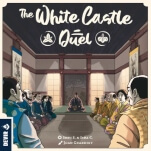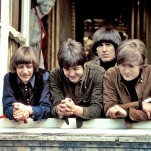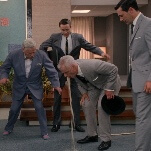Biggest controversy: In 1886, South Africa produced virtually no gold whatsoever, and within 10 years, the country accounted for nearly a quarter of the world’s production. Jan Gerritze Bantjes’ discovery of a major gold deposit in 1884 set off the Witwatersrand Gold Rush, which changed the whole country. The massive influx of prospectors led to development of the whole region—South Africa’s largest city, Johannesburg, was founded as a mining town—but it also led to war. South Africa was a Dutch colony, and the influx of foreigners led to the Dutch heavily taxing miners while denying them the right to vote. Britain, who coveted the now-lucrative colony, was happy to stoke tensions, and first encouraged rebellion against the Dutch, and then fought the Second Boer War, which led to Britain annexing South Africa, and ruling it until the country’s independence in 1961.
Thing we were happiest to learn: Regions around the world were built in large part by gold rushes. Besides dramatic shifts in population to California and Alaska during America’s two biggest gold rushes, two separate regions in Australia were developed by gold prospectors and those who came in their wake. 1851 saw gold rushes in New South Wales and Victoria, and there were several throughout Western Australia in the 1890s. In each case, besides the large numbers of Australians who moved cross-country, each gold rush brought in a wave of immigration—in many cases, prospectors who had already tried their luck in an American gold rush and went Down Under in search of further riches. As populations boomed in gold-rich areas, Australia’s government funded large-scale infrastructure projects to accommodate the influx, and as a result, many people stayed even after the gold was gone. New Zealand experienced something similar during and after the Central Otago Gold Rush in 1861, which attracted veterans of both the California and Victorian rushes.
Thing we were unhappiest to learn: While the early days of a gold rush were a good time for a lucky individual to get rich quick, capitalism always won out in the end. Gold rushes nearly always started with a small-time prospector finding “gold-bearing sediment,” i.e., dirt or sand with gold content, usually in a river, where it was washed away from a larger deposit. 19th-century prospectors would pan for gold, sifting the precious metal out from the worthless sediment. Panning for gold required little investment or special skills, which is why it was attractive to large numbers of people. But the gold in question was merely an indicator of a much larger gold deposit, and that more plentiful gold was harder to get to. The initial prospectors generally only had a few years before the sediment-based gold was picked clean, but in their wake invariably came large mining companies, with the wherewithal to set up equipment, dig tunnels, and transport larger deposits. Mining companies would generally stay in the area for much longer, first digging up veins of pure gold, then lower-grade ore, then less-precious metals like silver, copper, or zinc.
Best link to elsewhere on Wikipedia: Nearly all of the links on the page are to locales where gold was discovered. One of the most breathtaking is Pike’s Peak, the tallest mountain in the Front Range of the Rocky Mountains. The mountain was named after Zebulon Pike, the first American to see it (although the Spanish and of course local Native Americans were well familiar), and despite his name was not the alien in a ’50s sci-fi movie. The summit of Pike’s Peak is higher than anything in America east of itself, and Katharine Lee Bates wrote the song “America The Beautiful” after being inspired by the view from Pike’s summit in 1893.
Further down the wormhole: The Klondike Gold Rush was immortalized in popular culture from Johnny Horton’s “North To Alaska” to the writing of Jack London. But the most enduring pop culture take on the Klondike is Charlie Chaplin’s film The Gold Rush, the fifth-highest-grossing silent film, which The New York Times called “the outstanding gem of all Chaplin’s pictures.” Chaplin himself said it was the film he wanted to be remembered for, and The Gold Rush is in the rarified company of the list of films with a 100 percent rating on Rotten Tomatoes, which we’ll peruse next week.








































